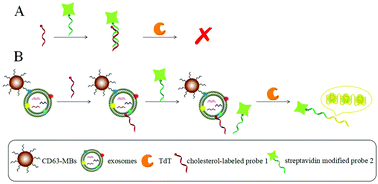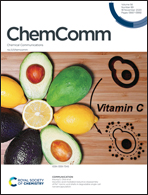A simple and sensitive method for exosome detection based on steric hindrance-controlled signal amplification†
Abstract
Exosomes have been widely considered as excellent noninvasive or minimally invasive biomarkers; however, the currently available methods for exosome detection usually need sophisticated instruments, or the sensitivity cannot be satisfactory, since the size of exosomes is very large. Nevertheless, in this work, by making use of the steric hindrance of exosomes due to their large size, we have developed a simple and sensitive method for the detection of exosomes with great potential in clinical use.

- This article is part of the themed collection: Chemical Communications HOT Articles


 Please wait while we load your content...
Please wait while we load your content...